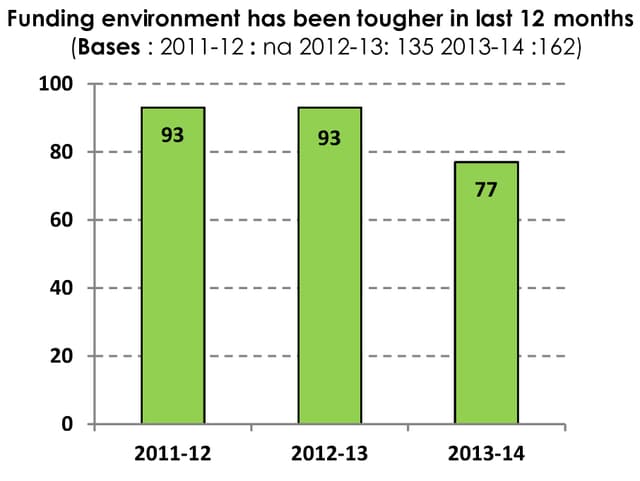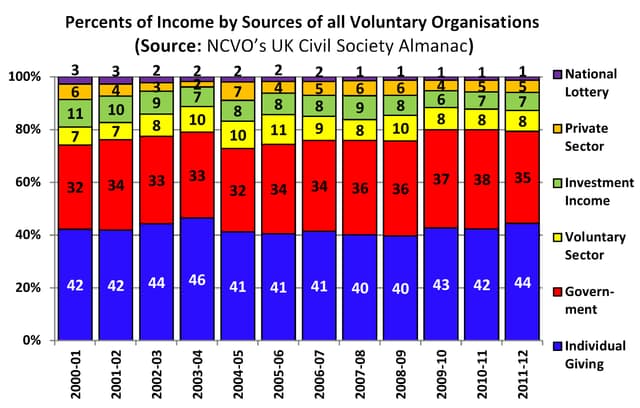Less pessimism about the fundraising climate but…
Andrew Papworth reports on the latest Managing in a Downturn and you’ll be pleased to learn that although things are still tough, there is a less pessimism about the fundraising climate. Even better is that individual giving continues to be an important part of fundraising in the UK (and elsewhere too, no doubt).
- Written by
- Andrew Papworth
- Added
- May 21, 2014
The final report in the Managing in a Downturn series of surveys from PwC (Pricewaterhouse Coopers), the Charity Finance Group (CFG) and the UK’s Institute of Fundraising was published recently. Despite some caveats about the report’s details, the section devoted to fundraising seems to show somewhat less pessimism than previous editions.
The top chart on the right shows that 77 per cent of those answering the question thought that the fundraising climate in the last 12 months had ‘got tougher’. Almost eight out of 10 sounds pretty bad but at least it’s an improvement on the 93 per cent scores for the two previous years.
When it comes to the prospects for the next 12 months (see middle chart on the right), the improvement seems even stronger with 68 per cent expecting a toughening in the climate compared with 94 per cent and 89 per cent in the two previous years – but that’s still two out of three expecting the worst.
But is even this rather modest fall in pessimism really justified? The bottom chart on the right (created from data in NCVO’s Civil Society Almanac) looks at the way the various sources of income for the voluntary sector have changed over the last dozen years. The first point worthy of note is that, typically, eight out of every 10 pounds come from two sources: the state and individual giving with the latter being rather more important.
It is amazing just how consistent individual giving has been as a proportion of the total income of the voluntary sector since the start of this millennium. As the chart shows, it has averaged about 42 per cent over the 12 years to the latest available year, with a peak of 46 per cent in 2003-04 and a minor peak of 44 per cent in the most recent year. In contrast, government funding has grown in share from an average of around 33 per cent up to 2006-07 to an average of 36 per cent in the following five years and fell back sharply in the latest year.
It is likely that in the UK, whatever complexion of government gets in at the next general election, the cuts will accelerate in order to reduce the country’s indebtedness. Because the sector has become more reliant on government funding in recent years, voluntary income will therefore need to go some to fill the growing gap and that is likely to mean greatly increased competition for every pound of individual giving. Even if the economy continues to recover and consumer confidence catches up so that people start to feel more confident and flush, charities are going to struggle just to stand still.




















